COSPAR ID 1985-109A Orbits completed 109 Apogee 370,000 m Dates 26 Nov 1985 – 3 Dec 1985 | SATCAT no. 16273 Period 1.5 hours Launch date 27 November 1985 Landing date 3 December 1985 | |
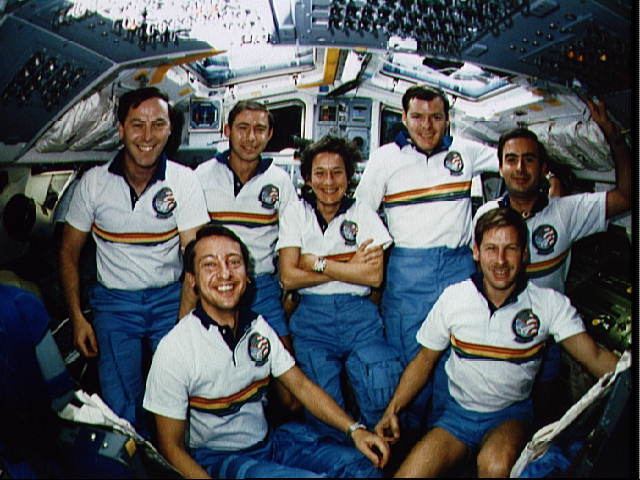 | ||
Mission type Satellite deploymentTechnology Mission duration 6 days, 21 hours, 4 minutes, 49 seconds Distance travelled 3,970,181 kilometres (2,466,956 mi) Members Brewster H. Shaw, Bryan D. O'Connor, Jerry L. Ross | ||
Cnn coverage of the sts 61 b launch
STS-61-B was NASA's 23rd Space Shuttle mission, and its second using Space Shuttle Atlantis. The shuttle was launched from Kennedy Space Center, Florida, on 26 November 1985. During STS-61-B, the shuttle crew deployed three communications satellites, and tested techniques of constructing structures in orbit. Atlantis landed at Edwards Air Force Base, California, at 16:33 EST on 3 December 1985, after 6 days and 21 hours in orbit.
Contents
- Cnn coverage of the sts 61 b launch
- Shuttle processing
- Payload
- Middeck payloads
- Other items
- Mission summary
- Spacewalks
- Wake up calls
- References
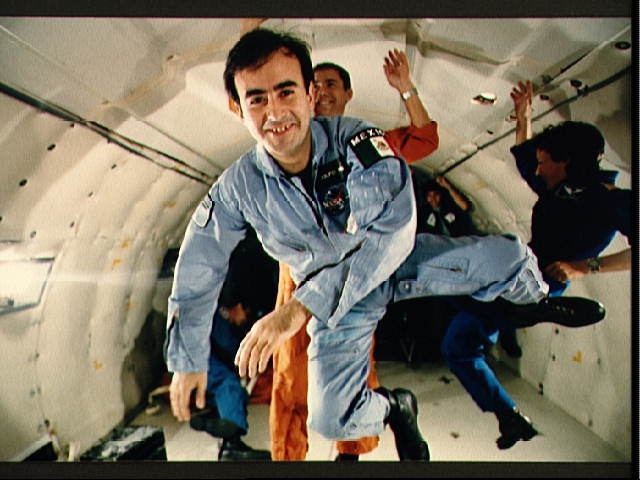
STS-61-B marked the quickest turnaround of a Shuttle orbiter from launch to launch in history – just 54 days elapsed between Atlantis' launch on STS-51-J and launch on STS-61-B. The mission was also notable for carrying the first and until today only Mexican astronaut, Rodolfo Neri Vela.
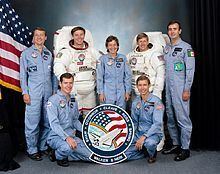
Shuttle processing

After landing at the Edwards Air Force Base at the end of STS-51-J on 7 October 1985, Atlantis returned to the Kennedy Space Center on 12 October. The shuttle was moved directly into an Orbiter Processing Facility (OPF), where post-flight de-servicing and pre-flight processing took place simultaneously.
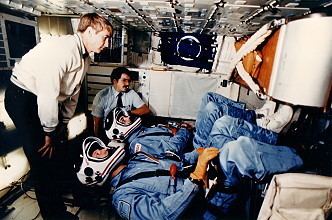
After only 26 days in the OPF, a record fast processing in the history of the Space Shuttle program, the shuttle was rolled to the Vehicle Assembly Building on 7 November. Atlantis was mated with the External Tank and Solid Rocket Booster stack and was rolled out to launch pad 39A on 12 November 1985.
Payload
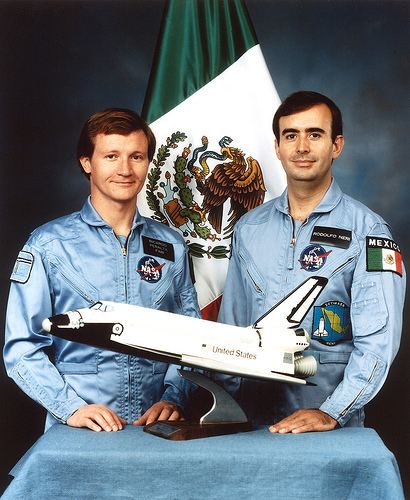
Three satellites were deployed during the mission: Aussat 2, Morelos II, and Satcom K2. The first two were the second in their series, the first examples having been deployed during STS-51-I and STS-51-G. Both were Hughes HS-376 satellites equipped with a PAM-D booster to reach geosynchronous transfer orbit. Satcom K2, meanwhile, was a version of the RCA 4000 series. RCA American Communications owned and operated the satellite system of which Satcom K2 was a part. The satellite was deployed using a PAM-D2 booster, a larger version of the PAM-D. This was the first flight of this booster stage on a Space Shuttle.
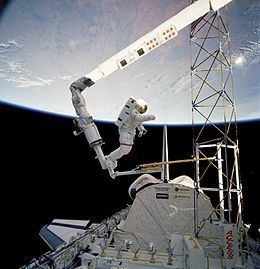
All three satellites were successfully deployed, one at a time, and their booster stages fired automatically to lift them to geosynchronous transfer orbits. Their respective owners assumed charge, and later fired the onboard kickmotors at apogee, to circularize the orbits and align them with the equator.
Middeck payloads
Other items
A checkered racing flag was carried onboard Atlantis during STS-61-B; the flag is now on display at the Indianapolis Motor Speedway Hall of Fame Museum.
Mission summary
Space Shuttle Atlantis lifted off from Pad A of Launch Complex 39 at Kennedy Space Center at 19:29 pm EST on 26 November 1985. The launch marked the second night launch of the Space Shuttle program, and the ninth and final flight of 1985.
A key element of the mission's objectives was EASE/ACCESS, an experiment in assembling large structures in space. EASE/ACCESS was a joint venture between the Langley Research Center and the Marshall Space Flight Center. ACCESS was a "high-rise" tower composed of many small struts and nodes. EASE was a geometric structure shaped like an inverted pyramid, composed of a few large beams and nodes. Together, they demonstrated the feasibility of assembling large pre-formed structures in space. Astronauts Jerry Ross and Sherwood Spring performed the two spacewalks of the mission which marked the 50th and 51st U.S. (12th and the 13th for the Shuttle) EVAs. An IMAX camera mounted in the cargo bay filmed the activities of the astronauts engaged in the EASE/ACCESS work, as well as other scenes of interest.
"This is probably not the preferred way of building a space station," Ross said later of EASE. The astronauts reported that the most difficult part of the spacewalks was torquing their own masses while holding the EASE beams. The ACCESS worked well, while EASE required too much free floating. The astronauts judged that performing six-hour spacewalks every other day over a five or six-day period was feasible, and recommended glove changes to reduce hand fatigue. Ross said in the Extra-Vehicular Activity (EVA) debrief that the crew had tried to have the Manned Maneuvering Unit (MMU) manifested for use in the second spacewalk, because "for certain applications it would be very useful. In particular if you were building portions of a space station attached to the orbiter, then moving those portions farther than the manipulator arm could transport them." He added that the MMU could be used to attach cable runs and instruments in places out of reach of the shuttle's robotic arm (RMS).
During the mission, astronaut Rodolfo Neri Vela accomplished a series of experiments, primarily related to human physiology. He also photographed Mexico and Mexico City as part of the mission's Earth observations. Astronaut Charles Walker again operated the Continuous Flow Electrophoresis System, the third flight of this larger and improved equipment, to produce commercial pharmaceutical products in microgravity. An experiment in Diffusive Mixing of Organic Solutions, or DMOS, was conducted successfully for 3M. The object of this experiment was to grow single crystals that were larger and more pure than any that could be grown on Earth. One Getaway Special canister stored in Atlantis' payload bay carried a Canadian student experiment, which involved the fabrication of mirrors in microgravity with higher performance than ones made on Earth.
All the experiments on this mission were successfully accomplished, and all equipment operated within established parameters. Atlantis landed safely at Edwards Air Force Base at 16:33 EST on 3 December 1985, after a mission lasting 6 days, 21 hours, and 5 minutes. Atlantis landed one orbit earlier than planned due to lighting concerns at the Edwards AFB. Rollout distance on landing was 10,759 feet lasting 78 seconds.
Spacewalks
Two spacewalks were conducted during the STS-61-B mission to demonstrate assembly techniques which might be used in space station assembly.
Wake-up calls
NASA began a tradition of playing music to astronauts during the Gemini program, and first used music to wake up a flight crew during Apollo 15. Each track is specially chosen, often by the astronauts' families, and usually has a special meaning to an individual member of the crew, or is applicable to their daily activities.
